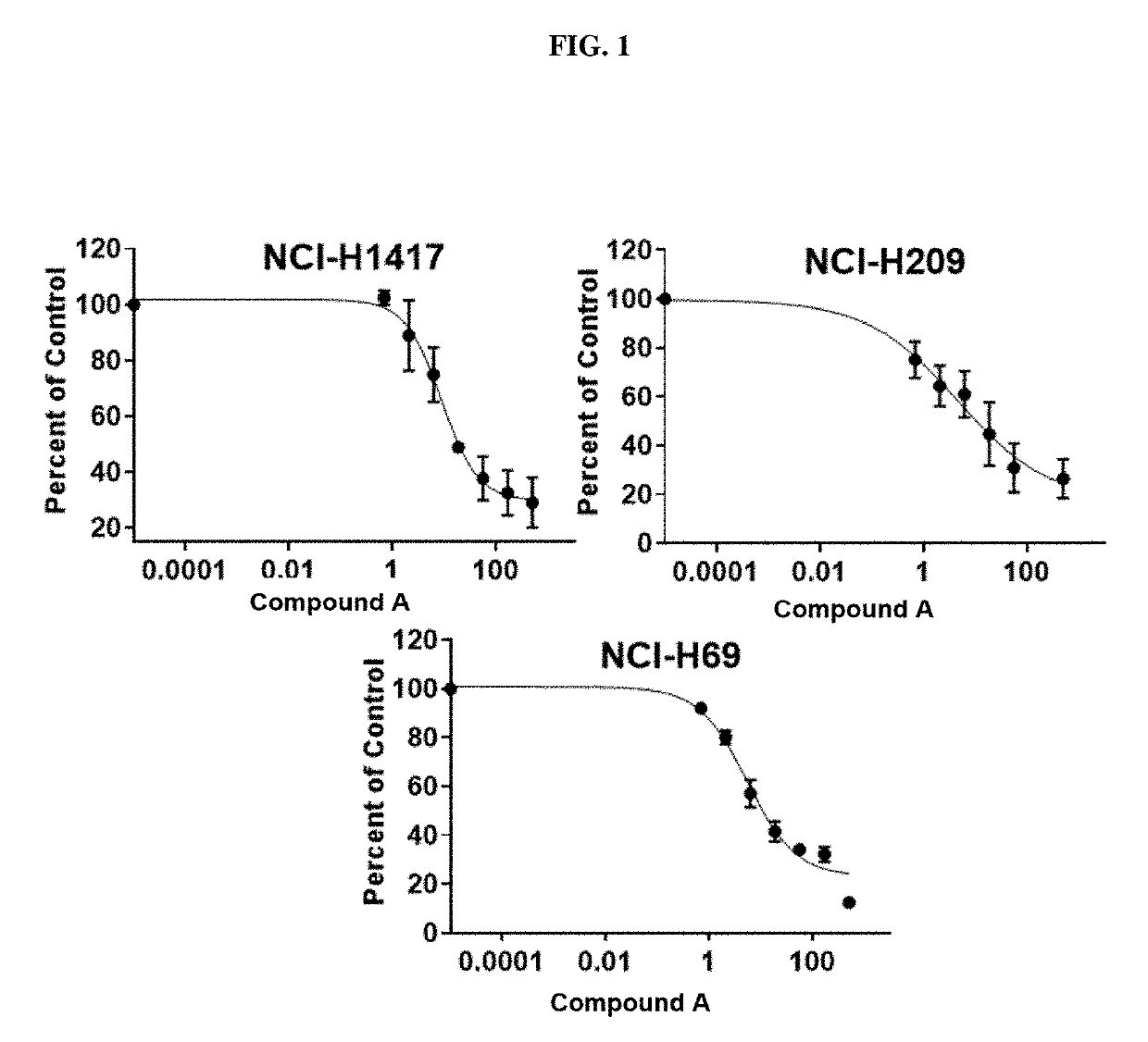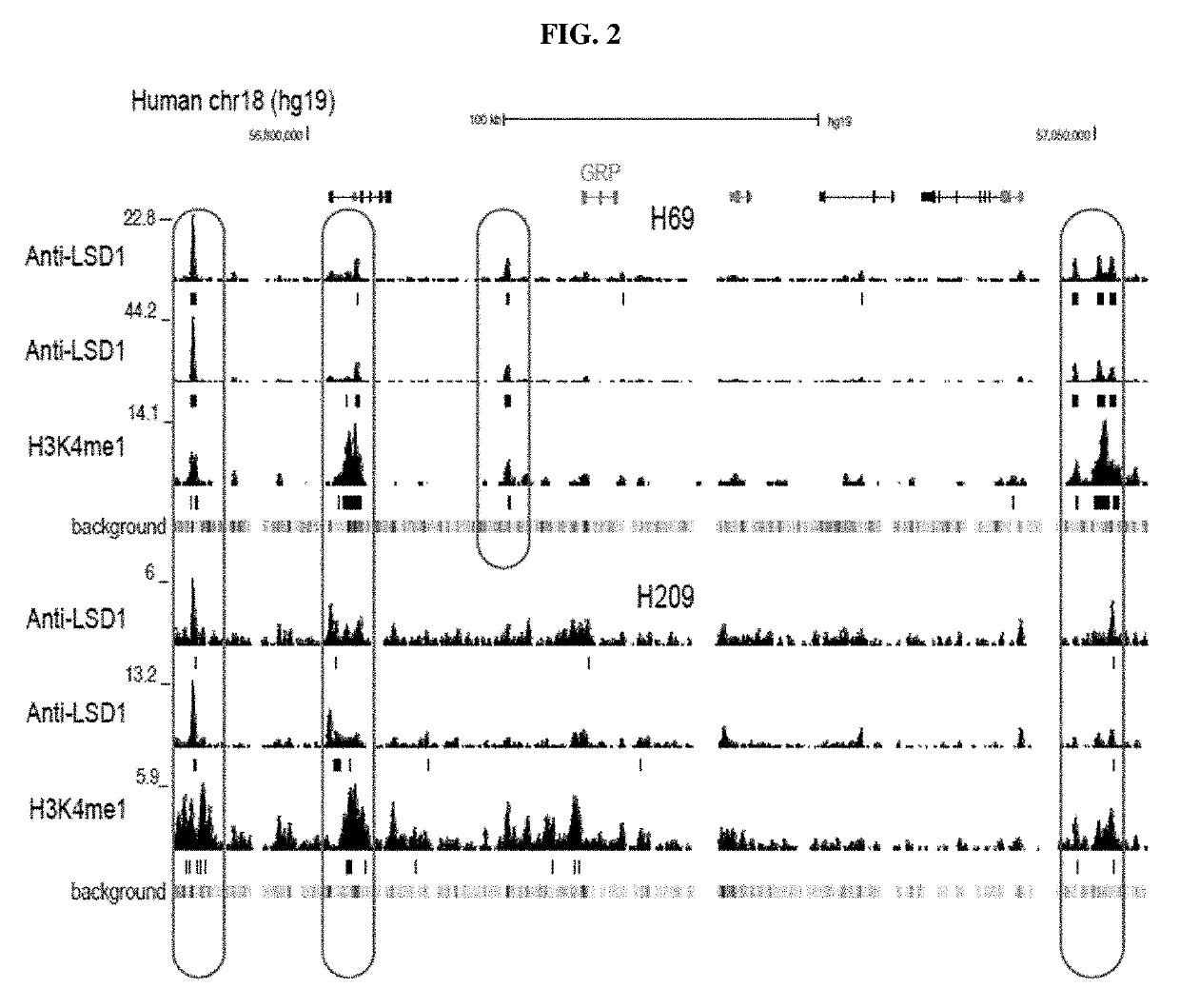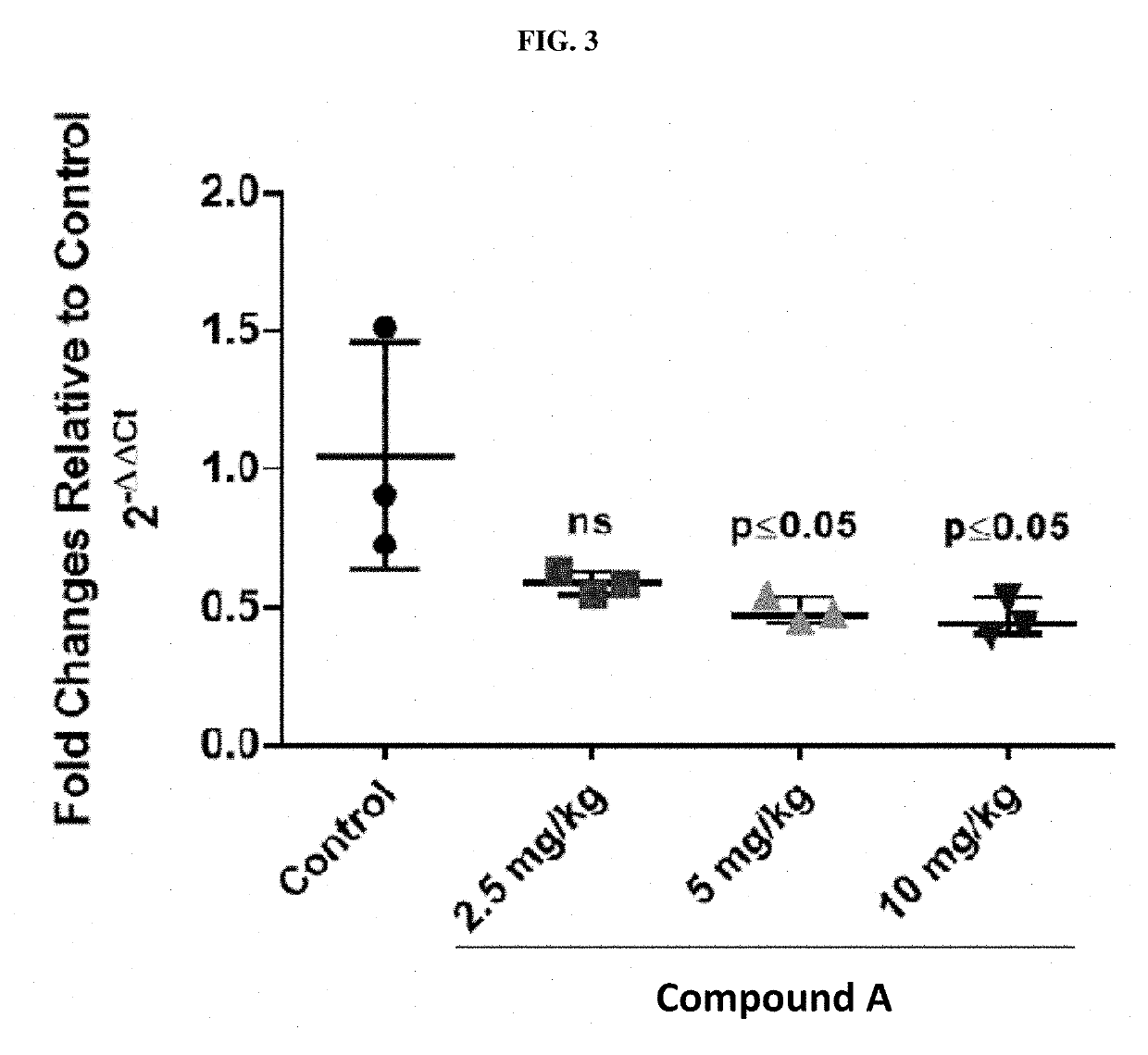Treatment of relapsed and/or refractory solid tumors and non-hodgkin's lymphomas
a solid tumor, refractory technology, applied in the direction of biocide, heterocyclic compound active ingredients, drug compositions, etc., can solve the problems of significant disfigurement and morbidity
- Summary
- Abstract
- Description
- Claims
- Application Information
AI Technical Summary
Benefits of technology
Problems solved by technology
Method used
Image
Examples
example 20
inopiperidin-1-yl)-5-chloro-1-methyl-6-oxopyrimidin-4-yl]2-fluorobenzonitrile
[0274]
[0275]To a solution of {1-[5-chloro-4-(4-cyano-3-fluoro-phenyl)-1-methyl-6-oxo-1,6-dihydro-pyrimidin-2-yl]-piperidin-4-yl}-carbamic acid tert-butyl ester (150 mg, 0.33 mmol) in EA (5 mL) was added a 5N HCl solution in EA (5 mL). The reaction mixture was stirred at RT for 2 h, and the solvent was concentrated in vacuo to give 120 mg of the title product as HCl salt (94%). 1H NMR (400 MHz, CD3OD): δ1.67-1.72 (m, 2H), 2.02-2.06 (m, 2H), 3.13-3.16 (m, 2H), 3.34-3.38 (m, 1H), 3.42 (s, 3H), 3.98-4.02 (m, 2H), 7.82-7.90 (m, 3H). [M+H] Calc'd for C18H17FN6O, 353; Found, 353. 1H NMR (400 MHz, METHANOL-d4): δ ppm 1.73-1.91 (m, 2H), 2.18 (d, J=12.13 Hz, 2H), 3.06 (t, J=12.76 Hz, 2H), 3.33-3.40 (m, 1H), 3.57 (s, 3H), 3.83 (d, J=13.14 Hz, 2H), 7.75-7.93 (m, 3H).
[0276]
TABLE 3ChemicalMSSynthesisStructure(ESI)Example(prepared by procedure of cited Example)m / zNMR spectrum data214331H NMR (400 MHz, CD3OD): δ 1.89-1.93 ...
example 120
piperidin-1-yl)-5-(3-fluoro-4-methoxy-phenyl)-1-methyl-6-oxo-1,6-dihydro-pyrimidine-4-carbonitrile
[0281]
[0282]A mixture of {1-[4-cyano-5-(3-fluoro-4-methoxy-phenyl)-1-methyl-6-oxo-1,6-dihydro-pyrimidin-2-yl]-piperidin-4-yl}-carbamic acid tert-butyl ester (100 mg, 0.23 mmol) in EA (5 mL) was added a 5N HCl solution in EA (5 mL) was stirred at RT for 2 h. The solvent was concentrated in vacuo to give 85 mg of the title product as the HCl salt (93%). 1H NMR (400 MHz, CD3OD): δ1.71-1.75 (m, 2H), 1.89-2.03 (m, 2H), 2.96-3.02 (m, 2H), 3.27-3.31 (m, 1H), 3.42 (s, 3H), 3.69-3.73 (m, 2H), 3.83 (s, 3H), 7.06 (t, J=8.0 Hz, 1H), 7.17-2.01 (m, 2H). [M+H] Calc'd for C18H20FN5O2, 358; Found, 358.
Preparation 121A: {1-[5-cyano-4-(4-cyano-3-fluoro-phenyl)-1-methyl-6-oxo-1,6-dihydro-pyrimidin-2-yl]-piperidin-4-yl}-carbamic acid tert-butyl ester
[0283]
[0284]A mixture of {1-[5-chloro-4-(4-cyano-3-fluoro-phenyl)-1-methyl-6-oxo-1,6-dihydro-pyrimidin-2-yl]-piperidin-4-yl}-carbamic acid tert-butyl ester (460...
example 121
piperidin-1-yl)-4-(4-cyano-3-fluoro-phenyl)-1-methyl-6-oxo-1,6-dihydro-pyrimidine-5-carbonitrile
[0285]
[0286]To a mixture of {1-[5-cyano-4-(4-cyano-3-fluoro-phenyl)-1-methyl-6-oxo-1,6-dihydro-pyrimidin-2-yl]-piperidin-4-yl}-carbamic acid tert-butyl ester (150 mg, 0.33 mmol) in EA (5 mL) was added a 5 N HCl solution in EA (5 mL), and the mixture was stirred at RT for 2 h. The solvent was concentrated in vacuo to give 120 mg the title product as HCl salt (94%). 1H NMR (400 MHz, CD3OD): δ1.67-1.72 (m, 2H), 2.02-2.06 (m, 2H), 3.13-3.16 (m, 2H), 3.34-3.38 (m, 1H), 3.42 (s, 3H), 3.98-4.02 (m, 2H), 7.82-7.90 (m, 3H). [M+H] Calc'd for C18H17FN6O, 353; Found, 353.
Preparation 122A: 4-cyano-3-fluoro-benzoyl chloride
[0287]
[0288]A mixture of 4-cyano-3-fluoro-benzoic acid (2.0 g, 12.12 mmol) in SOCl2 (20 mL) was refluxed for 2 h, and SOCl2 was removed in vacuo to give 4-cyano-3-fluoro-benzoyl chloride (2.2 g, 99%). The crude was carried to the next step without further purification.
Preparation 122...
PUM
 Login to View More
Login to View More Abstract
Description
Claims
Application Information
 Login to View More
Login to View More - R&D
- Intellectual Property
- Life Sciences
- Materials
- Tech Scout
- Unparalleled Data Quality
- Higher Quality Content
- 60% Fewer Hallucinations
Browse by: Latest US Patents, China's latest patents, Technical Efficacy Thesaurus, Application Domain, Technology Topic, Popular Technical Reports.
© 2025 PatSnap. All rights reserved.Legal|Privacy policy|Modern Slavery Act Transparency Statement|Sitemap|About US| Contact US: help@patsnap.com



